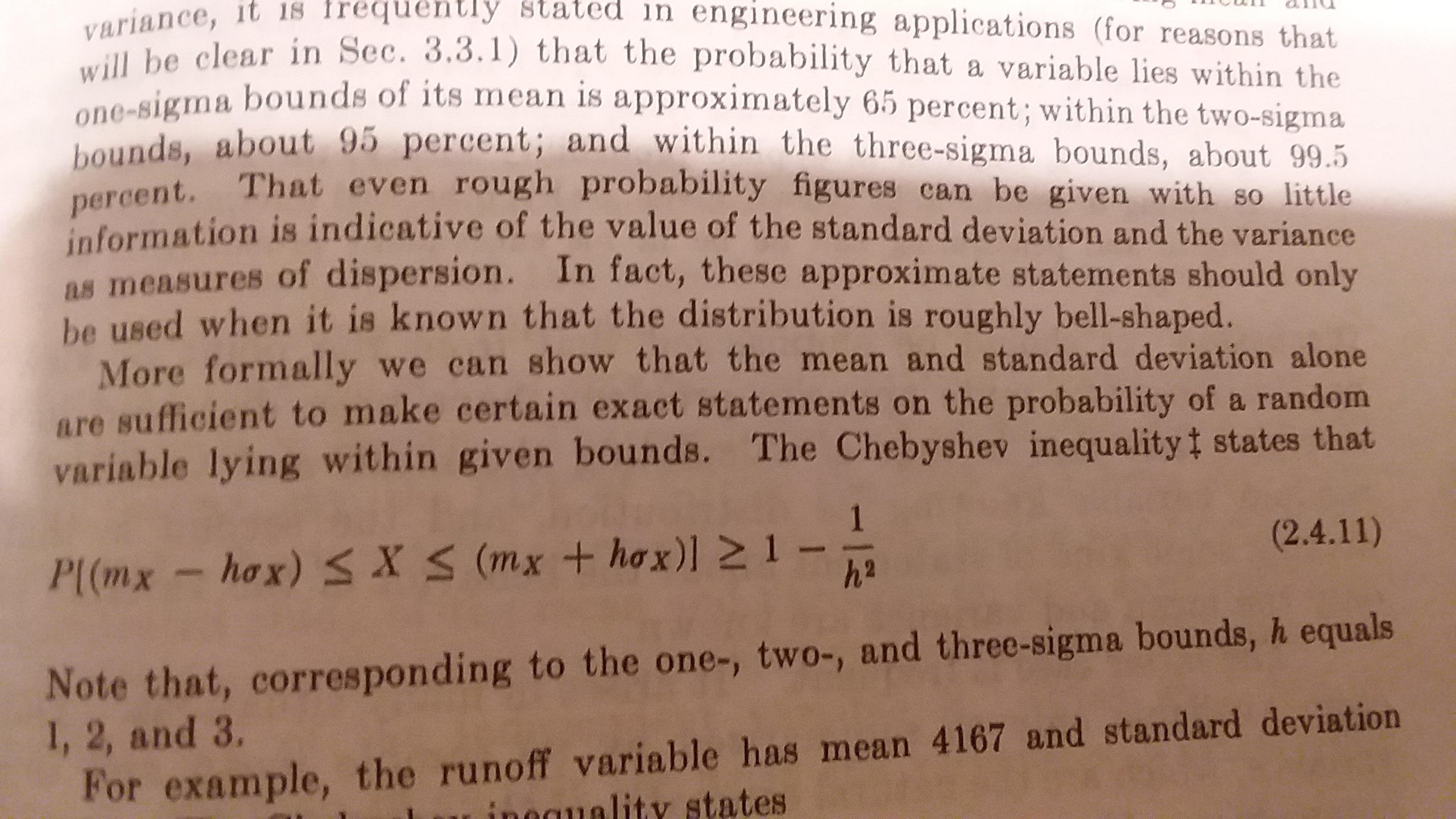al cloud ran robability that the foreman will have of the con- types A, B, and C, determine to wait more than 10 min beyond the minimum trip time after the first arriving truck until he sees it return a second time? Knowing the planned minimum trip time, an observed trip time exceeding this by 10 min might be a signal in an opera- tion-control plan to start a more careful check to see if there is a systematic slowdown in the operation which needs correcting. The probability found is the likelihood that the "signal" will be made even though the operation is running as planned. Sugges tion: Use the theorem of total probability, Eq. (2.1.12). 2.42. Chebyshev inequality. Show that the Chebyshev inequality, Eq. (2.4.11) olds by: (a) Splitting the integral defining of into three intervals, - to m - ho, m - ho to m + ho, and m + ho to o. (b) Showing that 83 2 0thef (20 ) da + 02haf (2c ) doc 2 0 " h ? ( P [ X 5 m - h] + PIX > m + h]) and hence that Eq. (2.4.11) holds. If a random variable has known m equal to 5000 and known of equal to (1000)2 but with unknown distribution (owing, say, to the intractable mathematics involved in its derivation), find the ranges within which the variable will lie with probabilities at least 0.5, 0.75, 0.90, and 0.99. 2.43. Law of large numbers. Find the mean and standard deviation of the random variablevariance, it is frequently Stated in engineering applications (for reasons that will be clear in Sec. 3.3.1) that the probability that a variable lies within the one-sigma bounds of its mean is approximately 65 percent; within the two-sigma bounds, about 95 percent; and within the three-sigma bounds, about 99.5 percent. That even rough probability figures can be given with so little information is indicative of the value of the standard deviation and the variance as measures of dispersion. In fact, these approximate statements should only be used when it is known that the distribution is roughly bell-shaped. More formally we can show that the mean and standard deviation alone are sufficient to make certain exact statements on the probability of a random variable lying within given bounds. The Chebyshev inequality $ states that Pl ( mx - hox)








